When you sell direct-to-consumer (D2C), your brand is an entire experience, and if shoppers can't find that experience, you essentially don't exist.
Relying only on paid ads is a fast track to burnout and a diminishing return on investment, because customers are getting smarter and more expensive to acquire.
And if that's not enough, you're also competing with both established giants and scrappy newcomers who are just as hungry for attention. The good news is that a sharp D2C SEO strategy can tip the scales in your favor, helping your brand punch above its weight class online.
Now, let's break down exactly what D2C SEO means, why it matters, and the tactics that actually move the needle.
What Is D2C SEO?

D2C SEO is the process of optimizing a direct-to-consumer brand's website and online content to rank highly in search engine results (like Google) for relevant, high-intent keywords.
The goal is to drive organic traffic, increase brand visibility, and ultimately convert visitors into customers without relying solely on paid advertising.
Difference Between SEO for D2C Brands and General E-commerce SEO
SEO for D2C brands is hyper-focused on brand building, relationship development, and proprietary data collection, distinguishing it from general e-commerce SEO, which often prioritizes pure transaction volume across a wide inventory range.
Let's distinguish between the two in more detail:
|
Aspect |
General E-commerce SEO |
D2C SEO |
|
Goal |
Rank marketplace or multi-brand store |
Elevate one brand's identity and products |
|
Audience |
Shoppers comparing multiple sellers |
Customers connecting directly with your brand |
|
Content |
Generic product descriptions |
Story-driven, intent-focused content |
|
Metrics |
Traffic and sales volume |
Customer lifetime value (CLV), brand loyalty |
|
Channels |
Broad category keywords |
Brand, niche, and long-tail keywords aligned with D2C strategy |
Why Organic Visibility Is Critical for Direct-to-Consumer Growth
Search is the gateway to discovery, with over 16 billion searches on Google each day. If your brand doesn't show up, a competitor will. Organic visibility gives D2C brands leverage in crowded markets without paying endlessly for ads.
The following is why organic visibility is non-negotiable for direct-to-consumer growth:
- Cost Efficiency: Once you rank, organic traffic is essentially "free" traffic, offering a drastically superior long-term ROI compared to perpetually escalating ad spend.
- Trust and Authority: High organic rankings position your brand as a trusted authority and industry leader, not just another vendor.
- Full-Funnel Coverage: SEO captures users at every stage, from those researching a problem (top-funnel) to those ready to buy your specific product (bottom-funnel).
- First-Party Data: When a customer comes directly to your site, you own the relationship and the data, which is the lifeblood of D2C profitability.
Core Components of a D2C SEO Strategy

A strong D2C SEO strategy blends technical precision with brand storytelling. Here's what matters most:
On-page SEO for Product Pages and Landing Pages
Product and landing pages are often a customer's first touchpoint. Optimizing titles, meta descriptions, structured data, and visuals ensures search engines understand your products, and customers are compelled to click.
Content Marketing Tailored to Buyer Intent
D2C brands thrive when content is built around customer questions, not just keywords. Think "best running shoes for flat feet" instead of generic "running shoes." Blogs, guides, and even user-generated content (UGC) help capture long-tail search and nurture prospects until they're ready to buy.
Technical SEO for Site Speed and Mobile Performance
If your site takes more than 3 seconds to load, you've already lost potential buyers. Technical SEO, including fast load times, mobile responsiveness, and clean architecture, is non-negotiable for D2C e-commerce success.
Link Building and Digital PR for Authority
For D2C brands, authority comes both from backlinks and being talked about. Digital PR, influencer features, and niche partnerships build brand recognition while strengthening SEO. A well-placed mention on a lifestyle blog or industry site can outrank thousands in ad spend.
In-House vs Agency SEO for D2C
Every D2C brand faces the same dilemma: build SEO muscle in-house or partner with a DTC SEO agency. Both paths can work, but it depends on your resources, goals, and appetite for complexity.
Here's how:
|
Factor |
In-House |
SEO Agency |
|
Expertise |
Deep knowledge of brand and products |
Breadth of experience across industries |
|
Cost |
Fixed salaries and tools |
Variable fees, often higher upfront |
|
Speed |
Slower ramp-up, but full control |
Faster execution with established systems |
|
Tools and Tech |
Limited by budget |
Access to premium SEO platforms |
|
Scalability |
Dependent on team size |
Can scale resources quickly |
Use cases:
- In-House: Best for brands with stable budgets, long-term SEO roadmaps, and the desire to embed D2C SEO strategy deeply into everyday marketing. Works well if you're aiming for tight integration across product, brand, and customer service.
- Agency: Ideal for fast-scaling D2C e-commerce brands that need specialized skills like SaaS marketing, quick wins, or lack internal SEO bandwidth. Agencies also shine when you need advanced services like digital PR, international SEO, or technical audits.
The right choice often comes down to stage and ambition. Freelance SEO D2C experts can bridge gaps, but if your brand is scaling fast, a dedicated D2C SEO agency can provide the horsepower you need.
On the flip side, building in-house ensures long-term control and tighter brand alignment. The smartest brands often use a hybrid model: in-house teams own the brand voice while agencies provide scale and technical depth.
Best Practices for Effective D2C SEO

Strong D2C SEO involves ranking in ways that drive sales. Here are the non-negotiables:
1. Prioritize Schema Markup for Product Pages
Schema markup helps search engines understand your products. With proper implementation, your listings can show rich snippets, like price, availability, and ratings, directly in search results. That extra detail makes clicks more likely and conversions smoother. Any serious DTC ecommerce SEO agency will tell you that schema is low-effort, high-reward.
2. Optimize for Long-Tail Keywords Tied to Buying Intent
Ranking for "sneakers" won't pay the bills. Ranking for "best white running sneakers under $100" just might. Long-tail keywords attract shoppers closer to purchase, and SEO for D2C brands thrives on these intent-rich searches. A DTC SEO strategy should map keywords to each stage of the funnel, with product and content pages doing the heavy lifting.
3. Leverage User-Generated Content (Reviews, Testimonials)
UGC is gold. Reviews, testimonials, and customer photos create fresh, keyword-rich content that search engines love and shoppers trust.
In fact, product pages with reviews can see conversion lifts of more than 3.5x. For freelance SEO D2C consultants, weaving UGC into optimization is often the first big win.
4. Build Community-Driven Backlinks
The strongest backlinks for D2C SEO services come from communities, including niche blogs, forums, lifestyle sites, and influencers genuinely connected to your audience.
These "earned media" links from authoritative, relevant sources are a clear signal to Google of domain authority and brand credibility.
Steps to Launch Your D2C SEO Strategy

The following steps can help you create an effective D2C SEO strategy:
1. Define Goals and KPIs
Define specific, measurable KPIs, such as: Organic Revenue, Organic Customer Acquisition Cost (CAC), Branded vs. Non-Branded Traffic Split, and Rich Snippet Appearance Rate.
Aligning these with overall business goals ensures that every hour spent on optimization directly impacts the bottom line, which is the whole point of being a direct-to-consumer business.
2. Conduct a Site Audit
A thorough site audit is the starting gun for any serious DTC SEO strategy. This technical deep dive identifies crawl errors, broken links, slow-loading assets, poor mobile usability, and missing Schema markup. Address these technical blockers first, as they are often the lowest-hanging fruit preventing your product pages from ranking.
3. Research Competitors and Keywords
Focus your keyword research on high-intent, long-tail variations, understanding that your target audience often searches for the solution before they search for your brand. This competitive intelligence informs your entire content roadmap, giving you an immediate strategic advantage.
4. Optimize Core Pages
With a clean audit and robust keyword research complete, the next step is implementation. Start with your most valuable assets, including product pages, collection pages, and high-converting landing pages. Ensure on-page elements like title tags, meta descriptions, headings, and internal links are optimized for your target keywords.
For D2C, optimizing the user experience (UX) is also key, making sure the content hierarchy is logical and that the page loads fast, reinforcing the brand experience you're selling.
5. Track, Refine, and Iterate
You must continuously monitor your defined KPIs. Use Google Search Console and Analytics to track keyword rankings, organic traffic trends, and, most importantly, conversions. If a new piece of content isn't ranking, refine the on-page elements or build targeted backlinks.
Final Thoughts
D2C SEO is the long-term, sustainable engine of growth for any direct-to-consumer brand looking to escape the rising cost and diminishing returns of paid advertising.
From setting clear KPIs to optimizing product pages and continually refining your approach, the brands that invest in smart D2C SEO see stronger visibility, higher conversions, and lower acquisition costs over time.
If you're ready to scale your D2C brand, connect with us and learn how a tailored D2C SEO strategy can fuel your growth.

Chris Onyett
Chris is one of the managing partners at Roketto. His area of expertise is digital marketing and loves sharing and educating on topics like Google Ads, CPC bidding tactics, Google Analytics, and marketing automation. When Chris isn't in the office, he enjoys playing volleyball, mountain biking, and hiking with his American Eskimo.











2.png)
2.png)









